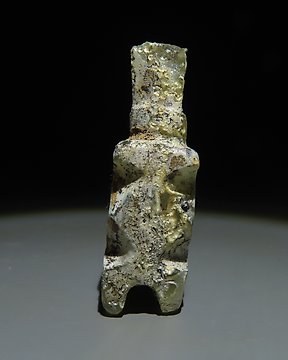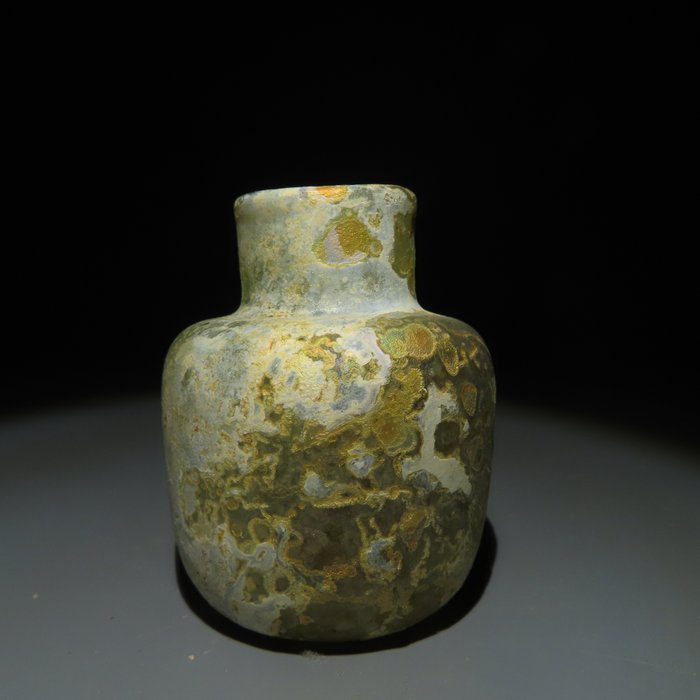
Epoca Romanilor Sticlă Balon Intact - Lacrimal. 5,7 cm H. Irizații excepționale de albastru-verde și argintiu
Nr. 81632807

Nr. 81632807

Flask - lacrimal.
- Nice green color -
Roman Empire, 1st - 3rd century A.D.
MATERIAL: Glass
SIZE: 6,7 cm height.
PROVENANCE:
- Private collection, Mr. H., Brussels, acquired before 1970.
- Private collection, Ms. D. T., Brussels.
- Art market, Paris, 2023.
EXHIBITED: Galerie Persépolis, 28 october - 13 Novmeber 1971, Brussels, Belgium.
CONDITION: Good condition.
DESCRIPTION:
Big and small sized bottles of various shapes (more or less globular body, tall or low flared neck, ribbed or plain handles, etc.) and blown in different colors (aubergine, blue, yellow, transparent, green, etc.) were very popular from the 1st to the 4th century A.D.: they were part of the most frequently used toiletry tools. Their success certainly encouraged glassworkers to be highly inventive in order to create new versions, even more attractive to the public.
Towards the end of the Hellenistic period, glass definitely supplanted terracotta as a raw material for the manufacture of containers in all areas of daily life: this event, which occurred gradually, shall be regarded as a major technical revolution in antiquity, made easier, in early Roman times, by the invention and quick spread of the blowpipe, and by the conception of furnaces resisting to higher and higher temperatures.
With a versatility like no other known material in Roman times, abundant availability, lightness and ease of use, glass enabled the imitation of a wide range of other materials (especially precious metals), whether in the form, the design or the color. Furthermore, the ancients certainly knew that glass is a chemically neutral substance, what makes it particularly suitable for the storage of cosmetics or pharmaceutical products, as well as food and liquids.
Just about all Roman burials contain clear or greenish glass vessels covered with an iridescent patina due to the action of humidity and air. These flasks, when made in narrow forms, are often called unguentaria or lacrimaria by collectors, but were only used to contain oils and perfumes in the tombs, not to be containers for tears.
The Romans also perfected the art of working figures in relief on the glass vessels with the addition of another layer of glass of a different colour, or one of enamel, along with moulding, cutting or engraving of the glass, with the result that the surfaces of the containers looked like worked cameos.
BIBLIOGRAPHY:
- ARVEILLER-DULONG, Véronique. NENNA, Marie-Dominique. Les verres antiques au museé du Louvre. Tomo II. Museé du Louvre. 2006.
- FLEMING, Stuart J. Roman Glass: Reflections on Cultural Change. University of Pennsylvania Museum of Archaeology and Anthropology. 1999.
Notes:
- The piece includes authenticity certificate.
- The piece includes Spanish Export License (Passport for European Union) - If the piece is destined outside the European Union a substitution of the export permit should be requested, can take between 1-2 weeks maximum.
- The seller guarantees that he acquired this piece according to all national and international laws related to the ownership of cultural property. Provenance statement seen by Catawiki.
Cum să cumperi de la Catawiki
1. Descoperă ceva special
2. Plasează cea mai mare ofertă
3. Fă o plată sigură